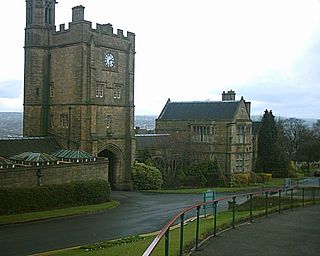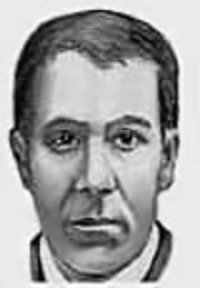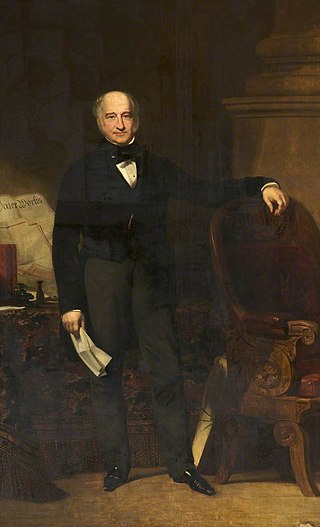
Weaste Cemetery is a public cemetery in Weaste, Salford, Greater Manchester, in England. Opened in 1857, it is the oldest of Salford's four cemeteries, covering 39 acres and containing over 332,000 graves. [1]

Weaste Cemetery is a public cemetery in Weaste, Salford, Greater Manchester, in England. Opened in 1857, it is the oldest of Salford's four cemeteries, covering 39 acres and containing over 332,000 graves. [1]

The cemetery lies south of Eccles New Road (A57 road) and is approached via Cemetery Road.
Salford was one of the earliest British municipalities to recognise that churchyards were getting full and that alternative burial grounds were required. When originally opened the cemetery included four chapels and a glazed summer house, which have since all been demolished. [2]
The first interment was that of the very popular MP, Joseph Brotherton, who had campaigned for the cemetery and died just before its completion. [3] Brotherton died on 7 January 1857 and his funeral took place a week later on 14 January. The cemetery was formally opened on 1 September 1857. [4] [5]
Then known as Salford Borough Cemetery, the site was extended by 16 acres (6.5 ha) in 1887, by which time there had been 124,500 burials. The original 21 acres (8.5 ha) site was becoming full and a 2.5 acres (1.0 ha) area bought earlier with the intention of being used as an addition had been compulsorily purchased for development of the Manchester Ship Canal. At that time, the cemetery was making a profit of around £2,500 per annum. [6]
During the Second World War at Christmas 1940, a German bomb fell on the cemetery during a raid on the nearby docks. Several headstones are still peppered with marks and holes caused by the shrapnel. [7]
Salford Council have mapped out a heritage trail for the cemetery and noteworthy graves have been provided with information panels. Occasional guided tours of the cemetery also take place. Several of the monuments in the cemetery are Grade II listed. [8]
The cemetery contains the graves of 373 Commonwealth service personnel who died during the First and Second World Wars, plus numerous memorials to servicemen buried abroad. Some of the 274 First World War dead lie in war grave plots in both the Church of England and Roman Catholic sections, each plot having a Screen Memorial listing the dead buried within them, while the 99 Second World War dead are scattered amidst the cemetery and there is also a special memorial listing 7 personnel buried in graves that could not be marked. [9]

Kensal Green Cemetery is a cemetery in the Kensal Green area of Queens Park in the Royal Borough of Kensington and Chelsea in London, England. Inspired by Père Lachaise Cemetery in Paris, it was founded by the barrister George Frederick Carden. The cemetery opened in 1833 and comprises 72 acres (29 ha) of grounds, including two conservation areas, adjoining a canal. The cemetery is home to at least 33 species of bird and other wildlife. This distinctive cemetery has memorials ranging from large mausoleums housing the rich and famous to many distinctive smaller graves and includes special areas dedicated to the very young. It has three chapels and serves all faiths. It is one of the Magnificent Seven cemeteries in London.

Nunhead Cemetery is one of the Magnificent Seven cemeteries in London, England. It is perhaps the least famous and celebrated of them. The cemetery is located in Nunhead in the London Borough of Southwark and was originally known as All Saints' Cemetery. Nunhead Cemetery was consecrated in 1840 and opened by the London Cemetery Company. It is a Local Nature Reserve.

William Norman VC was an English recipient of the Victoria Cross, the highest and most prestigious award for gallantry in the face of the enemy that can be awarded to British and Commonwealth forces.

Witton Cemetery, which opened in Witton in 1863 as Birmingham City Cemetery, is the largest cemetery in Birmingham, England. Covering an area of 103 acres (0.42 km2), it once had three chapels; however, two of these were demolished in 1980. The cemetery would perform up to 20 burials a day; however, it was declared "full to capacity" in December 2013, allowing burials only in existing family plots, or of babies or cremated remains. Extra capacity was therefore provided at the nearby New Hall Cemetery. The cemetery office was opened in 1999.



Cambridge American Cemetery and Memorial is a World War II American military war grave cemetery, located between the villages of Coton and Madingley, 7 km (4.3 mi) north-west of Cambridge, England. The cemetery, dedicated in 1956, contains 3,811 American war dead and covers 30.5 acres (12.3 ha). Cambridge American Cemetery is one of 26 overseas military cemeteries administered by the American Battle Monuments Commission (ABMC).

Luxembourg American Cemetery and Memorial is a Second World War American military war grave cemetery, located in Hamm, Luxembourg City, Luxembourg. The cemetery, containing 5,074 American war dead, covers 50.5 acres (20.4 ha) and was dedicated in 1960. It is administered by the American Battle Monuments Commission.

Weaste is a inner-city suburb of Salford, Greater Manchester, England. In 2014, Weaste and Seedley ward had a population of 12,616.

Brockley and Ladywell Cemeteries were opened within one month of each other in 1858 and are sited on adjacent plots of previously open land. The two component parts are characteristic examples of the first wave of Victorian public cemeteries and are now part of the Brockley Conservation Area.

Mark Anthony Addy AM was a publican and champion oarsman, from Manchester, England, who was awarded the Albert Medal (AM), and a number of other honours, for the rescue of over 50 people from the then highly polluted River Irwell in the 19th century. The Albert Medal was later superseded by the George Cross as the highest civilian or non-combat gallantry award in the British honours system.

Peel Park is a public urban park in Salford, Greater Manchester, England, located on the flood plain of the River Irwell below Salford Crescent and adjacent to the University of Salford. It was the first of three public parks to be opened on 22 August 1846, for the people of Manchester and Salford, paid for by public subscription. The park was the main public venue for the 1851 royal visit of Queen Victoria to Manchester and Salford and has been the subject of a number of paintings by the Salford artist, L.S. Lowry.

Sir Elkanah Armitage DL was a British industrialist and Liberal politician.

William Johnson Galloway was a British businessman and Conservative politician.

Southern Cemetery is a large municipal cemetery in Chorlton-cum-Hardy, Manchester, England, 3 miles (4.8 km) south of the city centre. It opened in 1879 and is owned and administered by Manchester City Council. It is the largest municipal cemetery in the United Kingdom and the second largest in Europe.

The City of London Cemetery and Crematorium is a cemetery and crematorium in the east of London. It is owned and operated by the City of London Corporation. It is designated Grade I on the Historic England National Register of Historic Parks and Gardens.

Joseph Brotherton was a reforming British politician, Nonconformist minister and pioneering vegetarian. He has been described as the first vegetarian member of parliament.

The two Camberwell cemeteries are close to one another in Honor Oak, south London, England. Both have noteworthy burials and architecture, and they are an important source of socioeconomic data in recording the historical growth and changing demography in the community for the Southwark area since 1855.

Agecroft Cemetery and Crematorium is a public cemetery in Pendlebury, Salford, Greater Manchester.
Salford is a city in the City of Salford Metropolitan Borough, Greater Manchester, England. The city, which includes the suburbs of Broughton, Charlestown, Kersal, Ordsall, Pendleton, and Weaste, contains 195 listed buildings that are recorded in the National Heritage List for England. Of these, four are listed at Grade I, the highest of the three grades, nine are at Grade II*, the middle grade, and the others are at Grade II, the lowest grade.